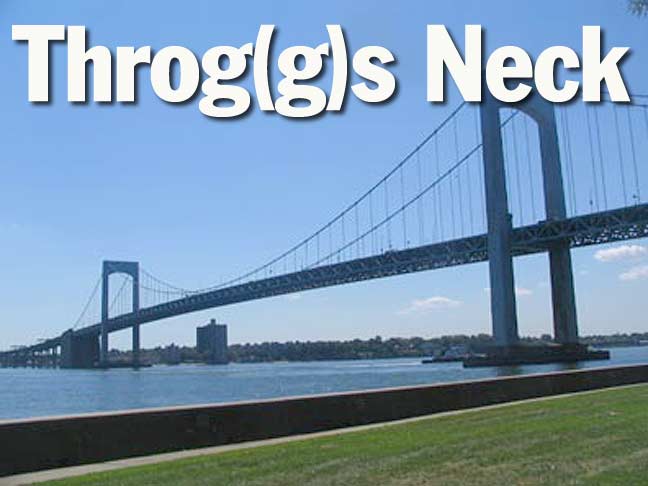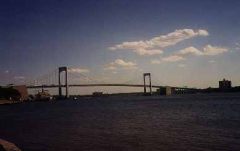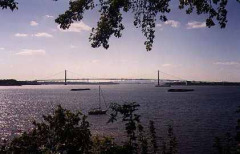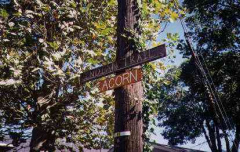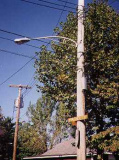Throgs Neck is named for John Throckmorton, who settled in the area in 1643, Throgs Neck is one of the least-commented on sections in the Bronx. Featuring gorgeous views of the East River (as it merges with Long Island Sound), it evinces little of the New York City of which it is officially a part. (The Whitestone Bridge and towers of Manhattan can be seen on clear days.)
Though it’s spelled Throgs on highway signs, many locals add the extra G — one of those quirks of neighborhood spellings.
The area also provides a wonderful view of the Throgs Neck Bridge (seen here from the end of Pennyfield Avenue)
Author David Yeadon describes this beautiful and rather remote NYC neighborhood:
A narrow footpath [Indian Trail] meanders along the clifftops past tiny cottages, originally built as summer homes in the 1920s. Barbecues and brightly colored lawn furniture suggest a laid-back California lifestyle here; below the cliffs are boat docks, bobbing fiberglass dinghies, and the lapping of little waves. Two pigtailed girls in party dresses chase one another between the golding trees along the path, and a dog barks in the backyard of a white clapboard cottage…
…at the end of the footpath, bounded by a small grassy park, two elderly men in baseball caps sit fishing on rocks at the water’s edge as the sun eases down behind the purple pillars of the Manhattan skyline. — from New York’s Nooks and Crannies
The private area known as Silver Beach, located on the southernmost side of Throgs Neck, does not use the regular New York City-style lamps and lamp fixtures used in the rest of the city. Note “Magnolia” sign at the bottom of the pole, indicating Magnolia Place, also the sign on Indian Trail and Acorn Place.
1/1/99

